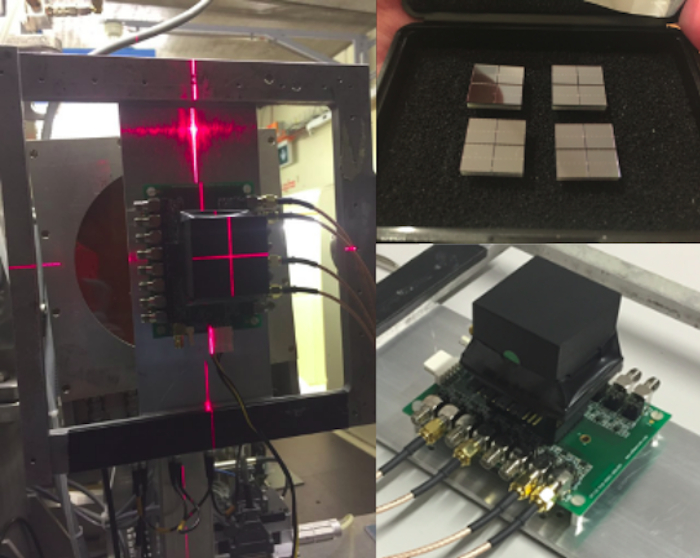Gamma-Ray Detectors
The group’s established heritage is in the following research areas:
- In-house development and production of gamma-ray detectors using fast scintillators
- Simulations of detector response and localisation capabilities
- The use of silicon photomultipliers (SiPMs) for scintillator readout
- Demonstration of gamma-ray detectors in high altitude balloon flights
- Miniaturisation of the Gamma-ray Module (GMOD) for the CubeSat EIRSAT-1
- Development of readout boards and microcontroller firmware to operate and read data from miniaturised detectors
- Quantifying radiation damage effects on SiPMs using a high energy proton beam
- Design of a detector system capable of localising astrophysical sources in orbit
- Calorimeter development for a Compton Telescope demonstrator
- Space qualification of a gamma-ray detector
The aim of this strand is to further develop detector systems for the detection of astrophysical objects in orbit using local expertise and facilities. The group further intends to collaborate on aspects of common interest with colleagues in UCD working with the Centre for Physics in Health and Medicine and colleagues in Particle Physics and on ceramics with colleagues in the School of Mechanical and Materials Engineering. Over the next years, the research focus will be on using novel scintillator materials, development of advanced readout solutions with improved timing performance, detector design and modelling for new space-borne experiments.

Gamma-ray detector and silicon photomultipliers undergoing radiation testing at the Paul Scherrer Institute.